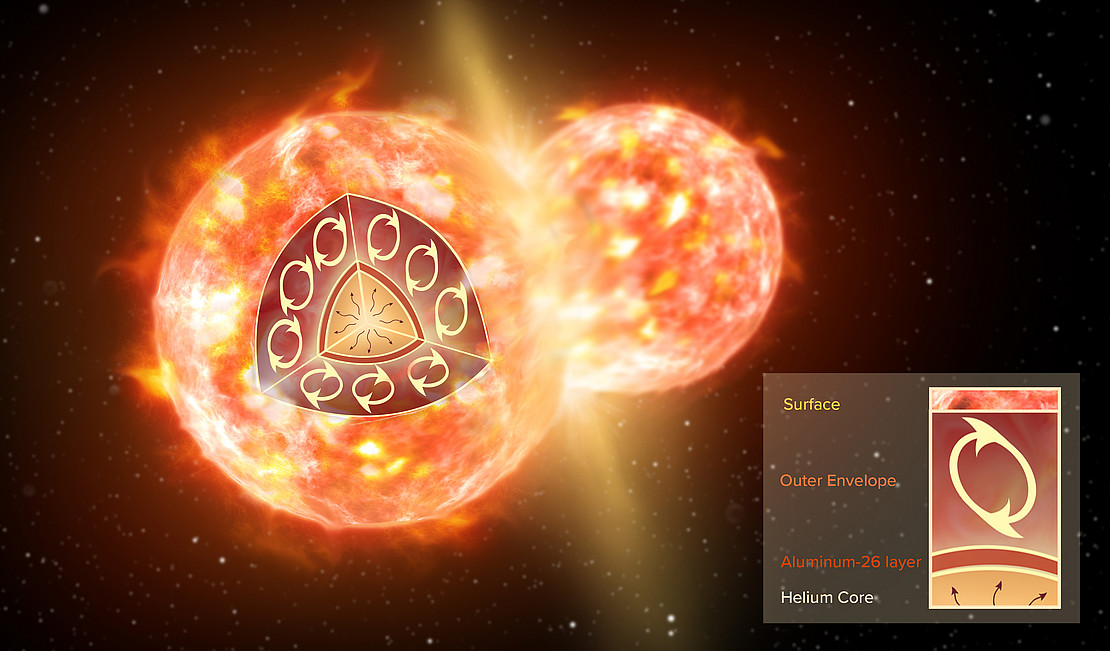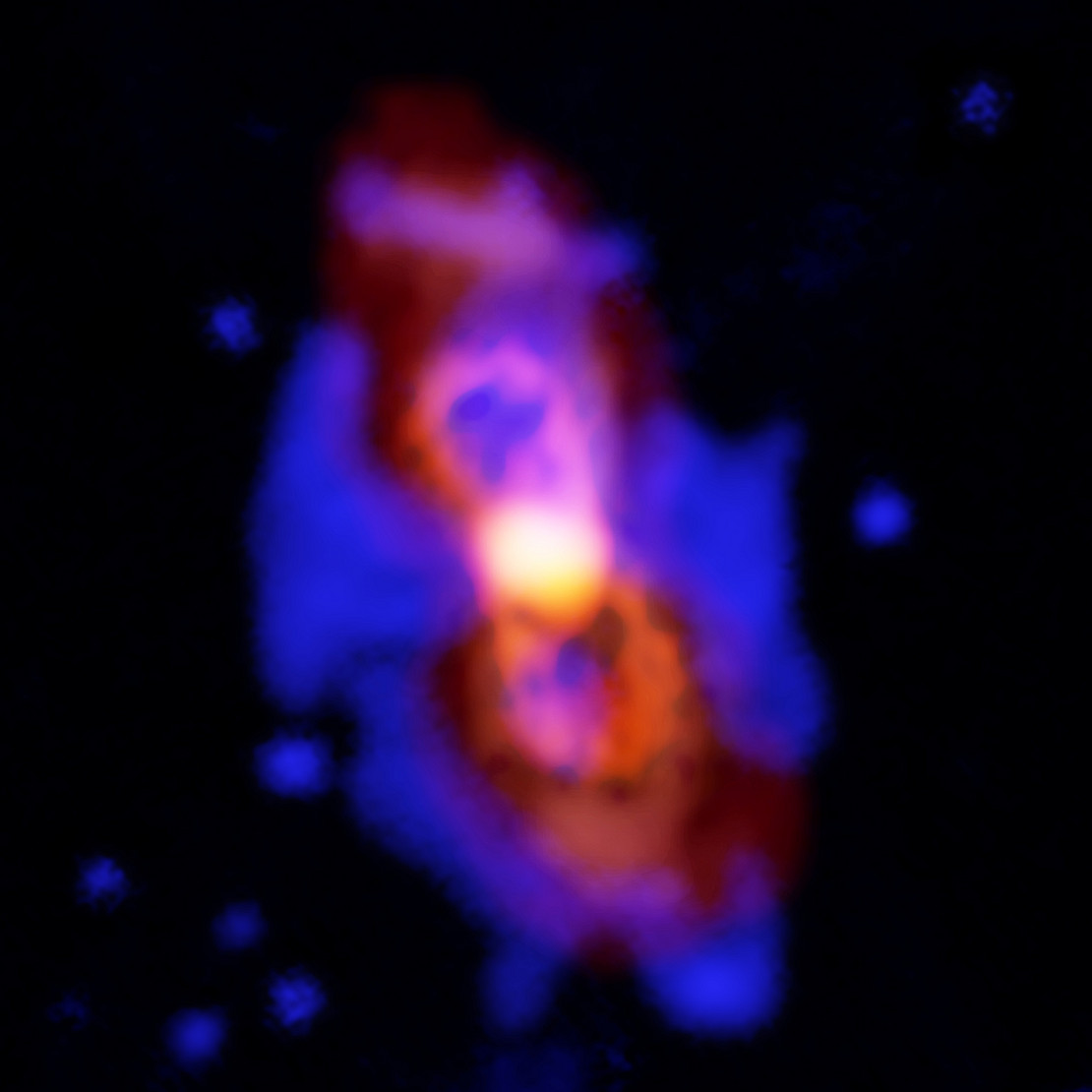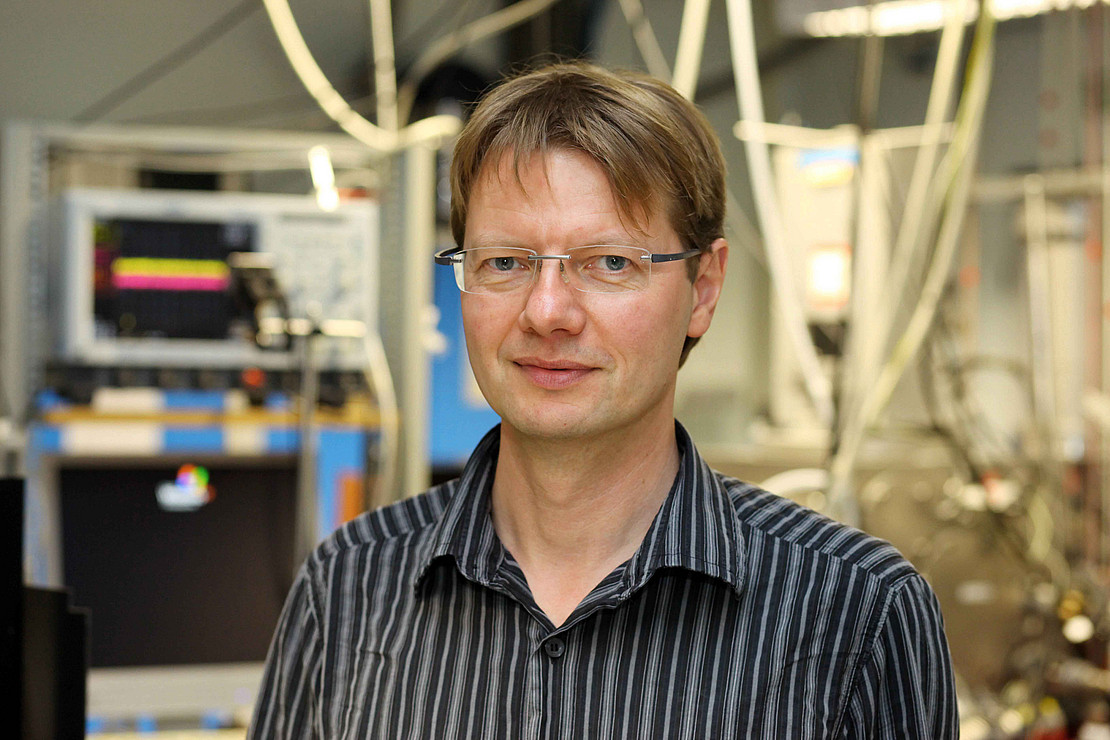This page contains automatically translated content.
Radioactive molecule localized in space for the first time
 Image: NRAO/AUI/NSF; S. Dagnello
Image: NRAO/AUI/NSF; S. Dagnello Image: ALMA (ESO/NAOJ/NRAO), T. Kamiński; Gemini, NOAO/AURA/NSF; NRAO/AUI/NSF, B. Saxton.
Image: ALMA (ESO/NAOJ/NRAO), T. Kamiński; Gemini, NOAO/AURA/NSF; NRAO/AUI/NSF, B. Saxton. Image: Andreas Fischer
Image: Andreas Fischer Image: University of Kassel
Image: University of KasselDiscovered in the debris of the collision of two stars, the molecule called aluminum monofluoride was first observed about 350 years ago. The radioactive part of the molecule is an aluminum isotope (26Al), which is released during the stellar collision and converts to the molecule aluminum monofluoride (26AlF) in the vicinity of the stellar debris. Recent observational data from radio telescopes definitely assigned the laboratory astrophysics group of the University of Kassel led by Prof. Dr. Thomas Giesen and his PhD student Alexander A. Breier to the radioactive molecule aluminum monofluoride. It is the first time that scientists have detected a radioactive molecule outside the solar system. Because radioactive aluminum can only be released when stars collide or explode, the method can be used in the future to uniquely identify stellar explosions or collisions even after a very long time.
"Aluminum monofluoride has a lifetime of about one million years," Giesen explains. "In the future, powerful telescopes will be able to provide data that can be used to determine exactly where in space such catastrophes have occurred in the past millions of years. This information is valuable because it can be used to determine the number of extinct stars in our galaxy. Together with the knowledge of how many stars are newly formed, one can derive statements about the growth or shrinking of galaxies."
In the specific case of the observed stellar remnants, the collision of the two stars occurred at a distance of about 2000 light-years from Earth. The red glowing remnants of the object CK Vul in the constellation Swan could still be seen by Louis XIV's contemporaries with the naked eye in the firmament, but in the meantime they can only be observed with very powerful telescopes. "This quite rare event now provides a dramatic insight into the interior of stars, as the collision leaves the cores exposed and releases the inner nuclear matter," Giesen explains. The discovery of the isotope not only provides insight into the fusion process of stars; it also shows that the inner layers of a star, where heavy elements and radioactive isotopes are forged, can be churned up by stellar collisions and thrown into space. There they then form the material for further cosmic processes.
The molecule itself was discovered based on its frequency spectrum: As the molecule tumbles through space, it emits light; using the method of spectral analysis, a characteristic pattern of this light signal can be detected, a kind of fingerprint unique to each molecule. Before the analysis in Kassel, however, the spectrum of 26AlF was unknown. Breier and Giesen therefore reproduced the fingerprint from the cosmos on Earth. Since radioactive aluminum is virtually absent on Earth, Ph.D. student Breier employed a trick and used the fingerprint data of abundant, non-radioactive 27AlF molecules known from laboratory data to derive accurate data for the 26AlF molecule.
Evidence for radioactive aluminum in space had previously been provided by gamma-ray analysis; however, science could not use it to locate the molecules, and thus the stellar explosions, or to infer the formation processes. For the current observations, the international team led by Dr. Tomasz Kaminski (Harvard-Smithsonian Center for Astrophysics, USA) collected and analyzed data from the large telescopes ALMA and NOEMA.
In addition to Breier, Giesen and Kaminski, other scientists from Germany and the USA, Poland, Australia and France were involved. The results have been published in the journal Nature Astronomy.
Link to article: go.nature.com/2OrVQze
Some information is based on a text from the European Southern Observatory ESO: https://www.eso.org/public/germany/news/eso1826/
Contact:
Prof. Dr. Thomas Giesen
University of Kassel
Department of Laboratory Astrophysics
Tel: +49 561 804-4775
E-mail: t.giesen[at]physik.uni-kassel[dot]de
Alexander A. Breier
University of Kassel
Department of Laboratory Astrophysics
Tel: +49 561 804-4789
E-Mail: a.breier[at]physik.uni-kassel[dot]de
Website: www.uni-kassel.de\go\labastro
Sebastian Mense
University of Kassel
Communication, Press and Public Relations
Tel.: +49 561 804-1961
E-Mail: presse[at]uni-kassel[dot]de
www.uni-kassel.de